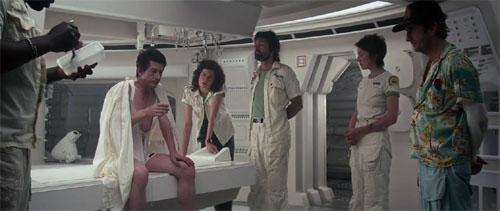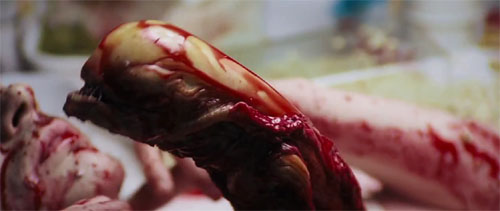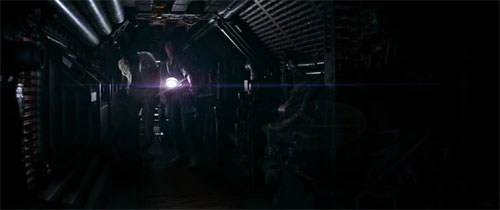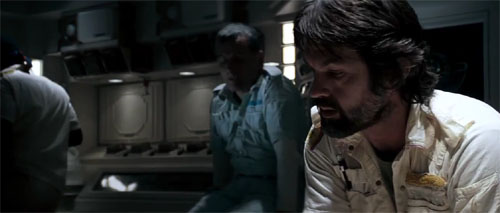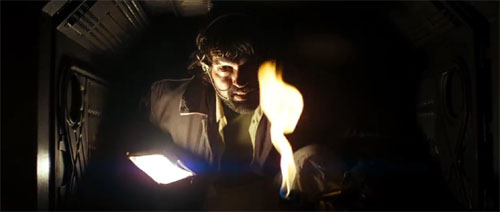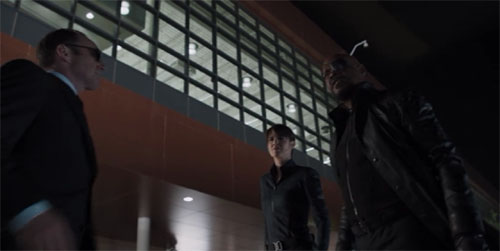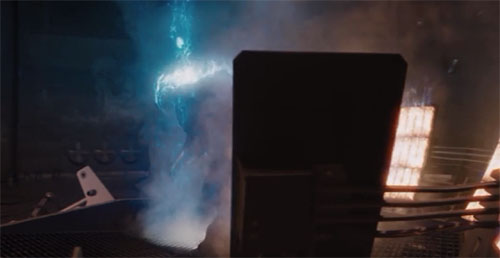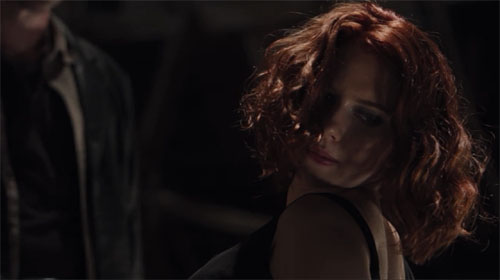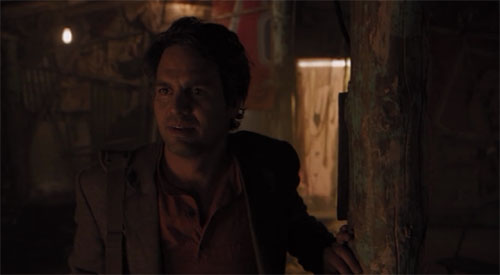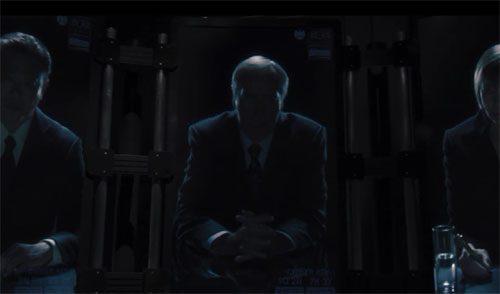Tagline: If you haven’t read Dragon Magazine in years you should definitely think about picking up a copy. If you’ve never read it at all, come on in and join the party.
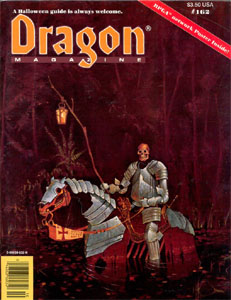 Those who have been into RPGs for a long time now can look back and remember a time when Dragon Magazine was not only king of the hill, but rightfully deserved to be. It was a time when you felt like the articles you were reading were actually contributing significantly to your roleplaying experience (instead of just being a list of new treasures and magical spells). It was a time when Dragonmirth was funny, and classic strips like SnarfQuest, Phil and Dixie, and (of course) Wormy were all in the midst of their runs. It was a time when, thanks to the Forum and the letters column you felt like part of a community.
Those who have been into RPGs for a long time now can look back and remember a time when Dragon Magazine was not only king of the hill, but rightfully deserved to be. It was a time when you felt like the articles you were reading were actually contributing significantly to your roleplaying experience (instead of just being a list of new treasures and magical spells). It was a time when Dragonmirth was funny, and classic strips like SnarfQuest, Phil and Dixie, and (of course) Wormy were all in the midst of their runs. It was a time when, thanks to the Forum and the letters column you felt like part of a community.
Dragon Magazine rocked.
I, on the other hand, pretty much missed all that. I entered the hobby in 1989, right along with the second edition of AD&D, and Dragon (while still a great magazine) was on a declining slope. The classic comic strips were all gone, the big names had picked up their bags and moved on, and things were beginning to slip. But I came in at such a time that I could appreciate what I had missed through discussions with others (plus I’ve read quite a bit of that older material in various forms over the years). There was a significantly long period of time in which the only reason I wasn’t cancelling my subscription to Dragon was, first, because I had always had a subscription to Dragon; second, Yamara was still worth reading; and, third, I was too lazy to send in the cancellation card.
Recently, however, a couple of things cropped up:
1. Because I was involved in a lot of other commitments, a stack of recent Dragons stacked up – from #257 to #262. When I finally sat down to read them, therefore, I was able to devour a total of six issues over the course of a couple of days. While doing so a fact which had been tickling my subconscious for well over a year now suddenly sprang into my conscious mind: Dragon was good again. Actually, Dragon was great.
2. Issue #262 was my 100th issue. My first was #162 way back in 1990.
Put those two little factoids together and I decided it was time to write a review.
IN THE BEGINNING
Issue #162 is still one of my favorite issues of Dragon — a fact which, I have no doubt, is inspired largely by nostalgia. Still, when it first arrived in the mail and I looked down at the skeletal rider upon a living steed done in tones of brown (it was the October issue), I knew I had something special in my hands. Issue #162 is one of only a handful of Dragons which I can honestly say I read cover to cover (the double-sized issue #200 was the last one which sticks out in my memory) – I remember the tome which contained unspeakable spells of undead magic; the article on how to manipulate a game so that your players feel horror and not just their characters; the short story of an undead monster haunting a fantasy village; the peals of laughter from Dragonmirth; and so much else.
That was a lot of fun.
About a dozen issues later things began to taper off for me though. It’s possible my excitement was merely dying (or that overexposure to the same old formulas had finally worn thin), but given not only my feelings but the expressed feelings of many others regarding the magazine I think a serious dip in quality was taking place (along with the rest of TSR’s product line).
THE HERE AND NOW
There was a long span in the early 200’s of Dragon where I was barely even flipping through the issues. The majority of the articles were based on tired formulas (and here’s the monsters of the month, the items of the month, and the spells of the month); I hadn’t read a short story in over fifty issues; and even Dragonmirth had lost its edge.
Then things started to turn up slightly, shortly after Dave Gross took the helm as editor. I still wasn’t reading it a lot (and an impulse to simply cancel my subscription kept cropping up from time to time), but things weren’t as bad as they could be. (Now there’s sterling praise for you.)
Then TSR went belly-up and Wizards of the Coast bought the company.
Which leads me to an interesting digression. It is a testament not only to how little attention I was paying to Dragon, but also my total lack of involvement in the greater RPG community of the time, that it took me three or four months to realize that my issues of Dragon weren’t showing up. Then one day an issue of the Comic Buyer’s Guide showed up with news that TSR had gone bankrupt and been bought out by WotC. Huh. Whaddya know?
Long story short: Curiosity brought me back online to find out the hoary details, which lead me to Heavy Gear and Feng Shui, the former of which (and the latter to a certain extent as well) revitalized my passion in roleplaying games, which, in turn, is why you’re reading this review.
End of digression.
In any case, when Dragon came back things started getting better at a very rapid pace. Indeed, in my opinion, TSR started improving as a whole. But it took awhile for the fact to catch up to my brain (for those of you old enough to have been around then, you’ll remember that for several years prior to the buy-out, TSR was pretty much at the bottom of the barrel in terms of product quality).
Which brings me to the here and now. You already know what I think (because I mentioned it above): Dragon rocks. Let’s take a look at the last ten issues and find out why.
THE GOOD STUFF
ART
Let’s start on the outside. For the longest time Dragon Magazine was cursed with covers depicting nothing but dragons. While at first this seems appropriate, in truth it was just repetitious. And while I like dragons, a steady diet of them is like a steady diet of anything else: Boring.
I bring that up because the cover art of the last ten issues hasn’t only been of fantastic quality – it’s been creative, original, and (at times) cunning. Ten issues ago, on the cover of #253, we have Brom offering us up the seemingly serene image of a young beauty dipping her feet in a river while playing on the harp. It is only after admiring the picture for a few moments that you realize that her eyes are mysteriously filled with an unexpected sadness. Then you see that the riverbed is composed of skulls. Finally a shocking truth reveals itself to you: The young woman is chained to the rock upon which she sits. The initially tranquil, peaceful vista gives away to a frightening scene, made all the more horrific by the subtle, hidden nature of it all.
Issue #254 has the incomparable Jeff Easley (famed for his dragons) exercising his comedic talent, with the picture of a hill giant who has obviously been knocked unceremoniously onto his rear by the fighter who, although he and his mount are clenched in the giant’s palm, still struggles to slay the poor fellow. (And for those of you disappointed that Jeff wasn’t depicting a dragon, you might notice the silhouette swooping across the sky in the background.)
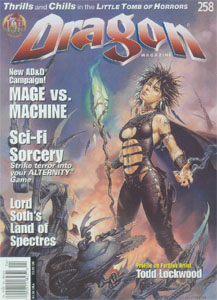 We’ll skip ahead now (noting that there “be no dragons here”) to issue #258.
We’ll skip ahead now (noting that there “be no dragons here”) to issue #258.
Oh. My. God.
It is, quite simply, gorgeous. So gorgeous you just sit there staring at it for a few moments, and then you open up to the interior page where they reproduce the cover art full-size and uncluttered with text (a very nice feature, I might add) to stare at it some more. Todd Lockwood, the artist, deserves every piece of kudos possible for this stunning, haunting image of a young female mage, clenching a green-glowing staff, after slaying some sort of mechanical monster. Inside you discover that the image was an office favorite; so much so that it inspired Bruce Cordell to write an article based on the cover.
(Coincidentally, I mentioned above that issue #200 was the last issue I read all the way through. That is, up until this issue; and I’ve been reading all of them since then the same way (except for any game-based fiction, I have a weak stomach).)
Skip up to #260, where Jeff Easley returns with a stunningly rendered dragon steed (complete with rider) – excellent stuff – and then onto issue #261.
Oh. My. God.
Did I say that already? Well, it bears repeating. Fred Fields’ dark interpretation of Boticelli’s “Birth of Venus” is every bit as stunning and evocative as Lockwood’s cover for #258. You should track down these two issues just so you can see these covers, if for no other reason. They’re that good.
We’ll wrap up our tour of the recent covers with the most recent: Tony DiTerlizzi’s painting for #262 (of a halfing holding a lantern while walking under a fallen tree as fairies dance in the shadows) is simply heartwarming.
Since I’ve waxed on and on (and on) about the covers, I will simply say of the interior art that it matches the exterior step for step. Undoubtedly this is the finest Dragon has ever looked.
LAYOUT
And speaking of that, let us move onto the sterling interior lay-out. Let me keep it brief and sum up: Clear presentation. Easy to read. Finding information is a simple task. Graphically rich (complementing without overpowering the text). Best looking magazine I subscribe to – in or out of the industry (and I subscribe to, literally, dozens).
GENERAL CONTENT
Keeping it general: The overall quality of the articles, columns, and features has improved tremendously over the past couple years — I’ve already mentioned that I’m reading the issues cover-to-cover again. Some specific features I’ve taken note of are discussed below.
THE SPINE
Another quickie: In the past couple years Dragon has adopted a squared-off spine. This, in itself, was a good idea. It makes storing and stacking the magazines a lot easier. Then they made it even better by printing the number and the theme of the issue on the spine – which means you can find the issues you’re looking for very quickly and very easily. Kudos.
THEME BALANCE
And speaking of themes, let me say that the balance between theme related and non-theme related material in each issue is balanced very nicely. When the theme idea became particularly prominent in the 190’s and early 200’s there was a tendency to put far too much themed material in each issue – so that if, for example, the theme was “Dark Sun” and you didn’t run a Dark Sun campaign there would be next to nothing in the issue of value to you. In response to complaints regarding this Dragon then entered a stage where, although the issues still had themes, there was almost no theme-related material in the issues. This defeated the purpose. They seem to have found an appropriate balance now where you can pick up an issue just for its theme and get enough material to make it worthwhile; while subscribers who don’t have any use for the theme won’t feel jilted.
 My one problem with this, however, is that I used to like the fact that the April issue was all comedy and the October issue was all horror. The “balance” here is actually, in my opinion, out of balance: I encourage them to return to a practice of having those two issues “overburdened” with themed material.
My one problem with this, however, is that I used to like the fact that the April issue was all comedy and the October issue was all horror. The “balance” here is actually, in my opinion, out of balance: I encourage them to return to a practice of having those two issues “overburdened” with themed material.
D-MAIL/FORUM
Properly handled letter columns are the life-blood of a magazine – particularly in fan-oriented publications. In the 1960s Marvel Comics had a multiple page letter column for each of their comics, in which Stan Lee (and, later, the other editors) engaged in active dialogues with the readers (and allowed the readers to engage in active dialogues with one another). Since then Marvel has continuously shrunk the size of the letter columns in synch with limiting their content – reading a letters page today you get 2-3 letters of congratulation and little else. It is a noticeable loss. (You can chart a similar decline, and disappearance, of the letter columns in F/SF magazines.)
Similarly, during its early days, and at its height, Dragon’s letters pages were one of the focal points for gaming fandom. Reading them (and perhaps participating in them) you really felt like you belonged to a community of people. During Dragon’s darkest days, on the other hand, the letter columns declined into a self-congratulatory mess (with the occasional exception). It was sickening watching people fall all over themselves congratulating a magazine of such poor quality through pure ignorance of their other options (except, of course, when they were congratulating other crappy TSR products through sheer ignorance of their other options).
Under Dave Gross, this has all turned around. He restructured the mail columns (and renamed the primary column to D-Mail) and then added the “Question of the Month” to the Forum. The most noticeable demarcation point between the old school letter columns and the new ones came when the question was asked, “What would you want to see in a third edition of AD&D?” (paraphrased). Critiques of AD&D were suddenly allowed and, with them, serious critiques of the magazine re-entered the columns as well. Gross has allowed a feeling of community to ferment and grow once again in these pages, making them one of the strongest features in the magazine instead of one of the weakest.
DUNGEONCRAFT
Starting in issue #255 a new department started in Dragon: Dungeoncraft, written by Ray Winninger (an active freelancer in the industry and the creator of the defunct Underground game). Since then Dungeoncraft has been presenting a step-by-step procedure for creating a new campaign world for AD&D — starting with basic elements and slowly building up to a world of great complexity and depth. Although most of the stuff in the articles is going to be old hat to the old hands of the industry, Winninger has done an excellent job of packaging and presenting the material in an easy-to-use manner for newcomers.
Personally I’ve had a great time reading it for a couple of reasons: First, Winninger occasionally comes up with a new way of doing something that I hadn’t thought of before. Second, it’s a great nostalgia trip. Who can’t remember grabbing a pencil and graph paper for the first time and sketching out a crude dungeon and a home base for the PCs? Great times.
WYRMS OF THE NORTH
For years now Ed Greenwood (creator of the Forgotten Realms) has been writing the Wyrms of the North column for Dragon. The concept for the column is simple: Every couple of issues Greenwood dedicates an extensive discussion to one of the dragons which lives in the northern parts of the Forgotten Realms. I have to admit that I didn’t think this column would last anywhere near as long as it has (or, if it did, that Greenwood could keep it interesting for very long), but I was wrong. I have to admit that there have been quite a few clunkers that had me skimming after a couple of paragraphs, but there have been plenty of times when Greenwood’s ideas are original and creative – showcasing the great depth and breadth of possibilities which dragons have.
A couple of additional points. First: Whatever faults it may have, Wyrms of the North is ten times better than its preceding Greenwood column (in which Elminster and major mages from the Greyhawk and DragonLance worlds got together for a chat at Greenwood’s house while he hid in a suit of armor and listened in). That column was just painful.
Second: Wyrms of the North would probably benefit if it became simply Wyrms — opening the discussion up not only to other sections of the Realms, but also to other TSR worlds (including generic write-ups). Since Greenwood doesn’t fill up every issue, it might even be conceivable that other people could do some of the columns (while Greenwood remained focused on the Realms).
PC PORTRAITS
Unfortunately I can’t pinpoint the exact issue when this feature started (as several of my back issues are stored in boxes elsewhere), but it is comparatively recently. Essentially, in each issue of Dragon you get a page full of thumbnail sketches which can be used for PCs (or NPCs, for that matter). Photocopy the page, cut ‘em out and you’ve got a quick visual reference for your players (or your DM, if your the player). Personally I’m far more likely to use these as a DM, since when I’m a player I tend to have a very specific image of my character (which is one reason why miniatures are usually a tough buy for me).
ROLE MODELS
Speaking of miniatures: Dragon has a miniature column again! Role Models is a monthly column written by Jim Bishop and J.D. Wiker which started up in issue #256. Personally I thought the loss of Through the Looking Glass (the old miniatures column) was a major blow to Dragon (although, at the time, I also felt its quality had dipped to such a low point that the blow had been struck anyway). Bishop and Wiker are doing a great job as they introduce a new generation of fans to miniatures on their way to dealing with more advanced techniques.
PROFILES
The Profiles feature has been around for quite awhile now, but it’s something I like quite a bit. On the last page of every issue we get a mini-biography of one of the people “behind the scenes” at TSR. This has introduced me to several creative personalities who I otherwise wouldn’t have taken notice of, and given me new insights into others whose works I already followed.
DRAGONMIRTH
The comic pages of Dragon have always been a mainstay – the single panel jokes cemented themselves into the D&D tradition, in my mind, with their inclusion in the original AD&D PHB and DMG. Not only has the quality of the two page Dragonmirth feature picked up over the past few years (from a lull in the mid-‘90s), but Gross has decided to include (tastefully and appropriately) several jokes elsewhere in the magazine.
Besides Dragonmirth the regular comic strips and series have also left an impression on AD&D and its fandom. From Wormy to SnarfQuest to Yamara these have become well-known icons in fandom. Right now Dragon has two strips, one of which definitely deserves its place among the greats, and the other which is quickly earning it: Knights of the Dinner Table and Nodwick.
Knights of the Dinner Table, of course, started in the pages of SHADIS, then moved to Dragon, and is now ensconced in its own comic book/magazine. Jolly Blackburn, its creator, however, continues to produce a two page feature for every issue of Dragon. Excellent stuff, as you well know. (And if you don’t know, you’re sadly missing out. Read my dedicated review of the Knights elsewhere on RPGNet.)
Nodwick, by Aaron Williams, has been around for awhile – focusing on the title character, a henchman for a group of adventurers. Nodwick is much put upon by his employers (as every henchman is): A wizard with a dry wit; a hypocritical chivalric knight who can’t live without treasure; and a short, near-sighted priestess who uses duct tape to heal Nodwick whenever he is dismembered by the monsters (which is often, but always off-screen). It grew out of Williams’ single-panel work for Dragonmirth (the same way almost every other major Dragon comic has). It has always been funny, but only recently has it begun to sit comfortably in my mind alongside the other classics of the RPG comic legacy. Nodwick appears in every issue as a four panel strip on the letters page. In the most recent issues, however, Williams has been doing full page features (in addition to the four-panel strip) with his main characters going through the classic AD&D modules ((They Might be) Against the Giants, (Little) Tomb of Horrors, and so on). A tie-in with the Silver Anniversary products TSR is releasing this year, these are absolutely hilarious. Anyone who has played through those old classics will be rolling on the floor (and even if you haven’t, Williams’ talent still makes the strips enjoyable).
THE BAD STUFF
Dragon Magazine is good. Case closed. There are only a couple of things which are serious drawbacks at the moment:
ECOLOGY ARTICLES
I used to really like these – and I still do, when Johnathon M. Richards isn’t writing them. The “Ecology of…” articles focus on one particular monster or creature, expanding what we know of them from their Monstrous Manual entry. Instead of being in dry prose, however, they always have a “hook” – they’re excerpts from an adventurer’s journal; or from a traveller’s tale; or a military spy; and so on.
A couple years back, Johnathon M. Richards wrote an Ecology article which used a meeting of the “Monster Hunters Association” as its hook. These comedic bumblers were hilarious… the first time. Maybe twice. Since then they have grown into a sort of franchise in which their bumbling, punning, and comedic missteps (particularly with spell-casting and obviously poor assumptions regarding the monsters) overshadow the useful information concerning the monsters being discussed (although the footnotes are still quite good… usually). Richards took what used to be one of my favorite columns and rendered it into a perpetual April Fools’ version of itself.
ISOLATION
Dragon has never been an industry-wide magazine, but over the course of the last year or so it has cut itself off entirely from anything which isn’t related to TSR or Wizards of the Coast. First, their industry-wide news column became TSR News. Then they proceeded to abolish and abandon their review columns. Considering that Dragon is the last major print magazine with an RPG focus in the United States (with the exception of Dungeon, which approaches the field from an entirely different angle) this is a sad loss. It is even sadder when you consider that Dragon services the AD&D audience – an audience composed of newcomers to this industry, many of whom are ignorant of their options beyond AD&D. Effectively, by isolating itself from the rest of the industry, Dragon is losing an excellent opportunity to bring people deeper into the industry. If we want to keep the industry alive and vibrant, we need to make it so that people stay here longer than one or two years – and the best way to do that is to show them the diversity of products which are available, so that they can grow into new games as they grow into new tastes.
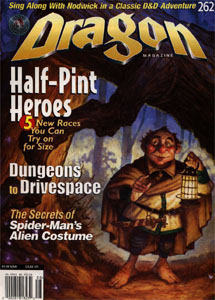 The first time I became really aware of the non-AD&D games available was when I read a review of the fourth edition of Champions in Dragon Magazine. It was a major revelation – first, that a superheroes game existed; but, second, that a generic engine was possible. It opened whole new vistas (although through a completely bizarre chain of events it would be years before I got Champions, after I had purchased nearly a dozen other games, including GURPS, first). It would’ve taken me years to get involved in other games without that single review; and, the shocking thing is, I probably wouldn’t have maintained an interest in RPGs solely through AD&D that long. If it hadn’t been for that review, drawing me deeper into the RPG field, I wouldn’t be writing this review today. Nor would I be buying Dragon Magazine and half a dozen other TSR and WotC products every year.
The first time I became really aware of the non-AD&D games available was when I read a review of the fourth edition of Champions in Dragon Magazine. It was a major revelation – first, that a superheroes game existed; but, second, that a generic engine was possible. It opened whole new vistas (although through a completely bizarre chain of events it would be years before I got Champions, after I had purchased nearly a dozen other games, including GURPS, first). It would’ve taken me years to get involved in other games without that single review; and, the shocking thing is, I probably wouldn’t have maintained an interest in RPGs solely through AD&D that long. If it hadn’t been for that review, drawing me deeper into the RPG field, I wouldn’t be writing this review today. Nor would I be buying Dragon Magazine and half a dozen other TSR and WotC products every year.
We’re talking about ten pages an issue – that would be all it would take to expand TSR News back to an industry-wide news sources and to include a reviews column with 2-3 major reviews and a handful of short insights. Several of these reviews, of course, would be of TSR-related material, but I want those reviews, too. There are many TSR products which I own, which I wouldn’t if I hadn’t read a review of them in the pages of Dragon (or, more recently, here on RPGNet).
CONCLUSION
The Dragon Magazine of yesteryear is back – providing an exciting experience not only for old-timers in the industry, but for newcomers as well. In fact, I’m going to go out on a controversial limb here and say that Dragon has never been as good as it is right now. The quality of writing, artwork, layout, and vision is at the finest level I’ve ever seen it (and between my own tenure with the magazine, and through back issues, I’ve seen a lot of it).
If you’ve let your subscription lapse (and have any interest in fantasy at all), pick it up again. If you’ve never had a subscription, get one.
(Okay, okay… you might want to pick up a couple of sample issues before taking me at my word and subscribing. I won’t complain. Really.)
In short, again: Dragon rocks.
Style: 5
Substance: 5
Author: Various
Company/Publisher: Wizards of the Coast / TSR, Inc.
Cost: $5.95
Page count: 112-128
ISBN: n/a
Originally Posted: 1999/08/06
The thing I remember most about this review is a pair of responses it received: First, there was the guy who was upset that I considered the “fattie” on the cover of Dragon #261 attractive. Whenever someone talks about the bad stereotypes that cling to gamers like the funk of a man who measures the span between showers in weeks instead of days that guy always pops to mind.
Second, there was a guy who was angry because I said that people should get a subscription to the magazine. Why? Because he didn’t like fantasy. Ergo, the magazine wasn’t for him, so where did I get off telling him to buy it? Let’s ignore for the moment that the review specifically talks about that limitation of the magazine and get down to the heart of the matter: Any review inherently assumes a basic level of competency on the part of the person reading it. If you need someone to tell you that you won’t like Dragon Magazine because you don’t like fantasy gaming, then what you need isn’t a review: It’s a psychiatric evaluation.
For an explanation of where these reviews came from and why you can no longer find them at RPGNet, click here.





